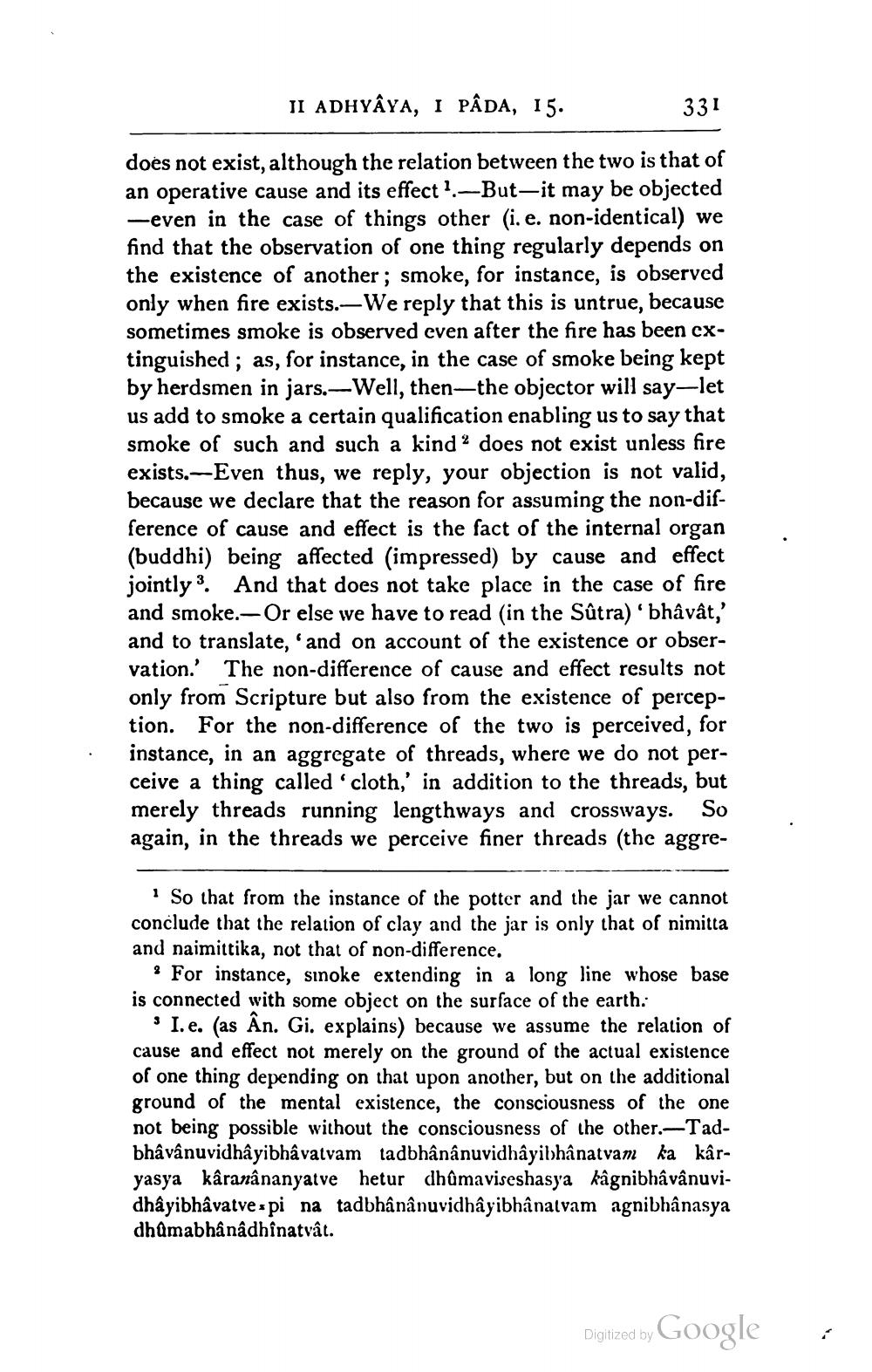________________
JI ADHYAYA, I PÂDA, 15.
331
does not exist, although the relation between the two is that of an operative cause and its effect 1.-But-it may be objected -even in the case of things other (i. e. non-identical) we find that the observation of one thing regularly depends on the existence of another; smoke, for instance, is observed only when fire exists.-We reply that this is untrue, because sometimes smoke is observed even after the fire has been extinguished; as, for instance, in the case of smoke being kept by herdsmen in jars.--Well, then-the objector will say-let us add to smoke a certain qualification enabling us to say that smoke of such and such a kind ? does not exist unless fire exists.-Even thus, we reply, your objection is not valid, because we declare that the reason for assuming the non-difference of cause and effect is the fact of the internal organ (buddhi) being affected (impressed) by cause and effect jointly 3. And that does not take place in the case of fire and smoke.—Or else we have to read (in the Sûtra) 'bhâvât,' and to translate, and on account of the existence or observation. The non-difference of cause and effect results not only from Scripture but also from the existence of perception. For the non-difference of the two is perceived, for instance, in an aggregate of threads, where we do not perceive a thing called 'cloth,' in addition to the threads, but merely threads running lengthways and crossways. So again, in the threads we perceive finer threads (the aggre
So that from the instance of the potter and the jar we cannot conclude that the relation of clay and the jar is only that of nimitta and naimittika, not that of non-difference.
. For instance, sinoke extending in a long line whose base is connected with some object on the surface of the earth.
• I.e. (as Ân. Gi. explains) because we assume the relation of cause and effect not merely on the ground of the actual existence of one thing depending on that upon another, but on the additional ground of the mental existence, the consciousness of the one not being possible without the consciousness of the other.-Tadbhâvânuvidhayibhâvalvam tadbhânânuvidhayibhanatvam ka kâryasya kâranânanyatve hetur dhûmaviseshasya kâgnibhâvânuvidhayibhâvatve pi na tadbhânânuvidhayibhanalvam agnibhậnasya dhumabhânậdhinatvật.
Digitized by Google
i




